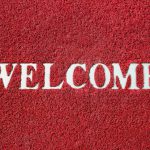Landscape Recycling: Composting for Eco-friendly Beauty
Turning landscaping waste into compost has many benefits. Too often, leftover grass clippings, leaves, twigs, and various plant materials go into landfills rather than being recycled at home. In nature, waste will attract various microorganisms, which will break it down to enrich the soil. You can mimic those natural processes by creating a compost site in your yard. After the materials have decomposed, they can be used as mulch to fertilize your plants. Doing this will save yourself future yard care costs and benefit the environment, too.
When you mow, clip and groom your yard you create waste. Composting it will:
- Reduce your waste disposal costs
- Produce valuable soil enrichers
- Conserve natural resources
- Reduce your environmental footprint
Locating the Compost Pile
Any area in your yard will work for a compost pile. Optimally, a shaded area will promote decay processes without damaging any structures. Don’t put a compost pile up against anything made of wood or it will rot. Compost can be piled directly on the ground, but to be sure that the compost heap doesn’t stray beyond the desired area you may want to surround its perimeter with wire fencing. A typical compost heap is three feet across and two to four feet deep.
Compost Materials
Commonly the waste found in a compost pile are described as browns and greens. Browns are anything brown and include dead weeds pulled from a garden, old mulch, various plants, straw and all material from your gutters. Greens are all the fresh plant material in your yard. These include grass clippings, weed growth, and newly fallen leaves. Fresh versus dead materials decompose at different rates, so it is helpful to identify them.
The Compost Pile
Compost piles include a layer of greens followed by a layer of brown with another layer of green above it as the height grows. Flatten the surface of each layer to allow the subsequent layers to sit on the pile evenly. Each layer should be about one-inch thick. And the top of the pile should be a layer of the brown material.
The Compost Process
As the debris accumulates, the compost pile will begin to generate heat. Within a month you will begin to notice that the interior is warm. You can check the temperature of the pile by using a probe or digital thermometer. When heat comes from the compost pile, it means that the decomposition process is proceeding, as it should. On cool mornings when the days are warm, you will notice steam will rise above the pile. The chemical processes will cease when colder weather arrives. You can maintain the process during that time of year by covering the pile with a tarp.
Turning the Pile
Piled compost needs to be turned periodically. This allows all your browns and greens to be subjected to the internal heat of the pile. Mixing the accumulation also helps to increase the speed of the composting process. You will know that the composting process is complete when all the materials look brown and crumbly. You can stir a compost pile by using a shovel, garden rake or a pitchfork. The goal is to put the least decomposed materials at the center of the pile.
Additional Information
Moisture is required for the compost process to work correctly. One way to add moisture to your pile is to lightly spray the surface with water before turning. Compost should have a woodsy smell after is has converted all the brown and green material in the pile to usable mulch. The entire composting process should take up to six months.




